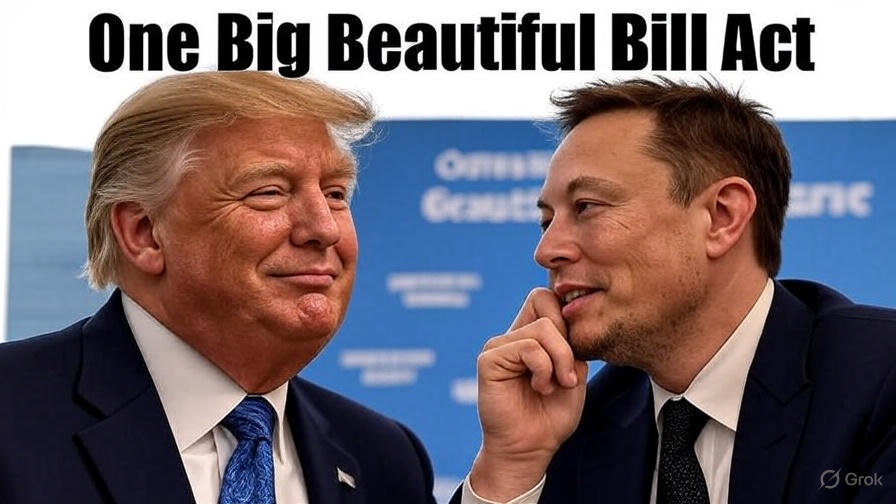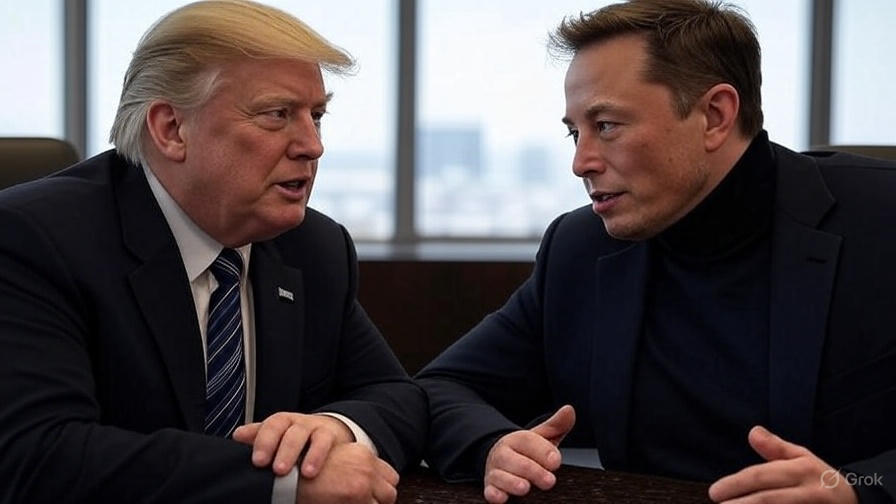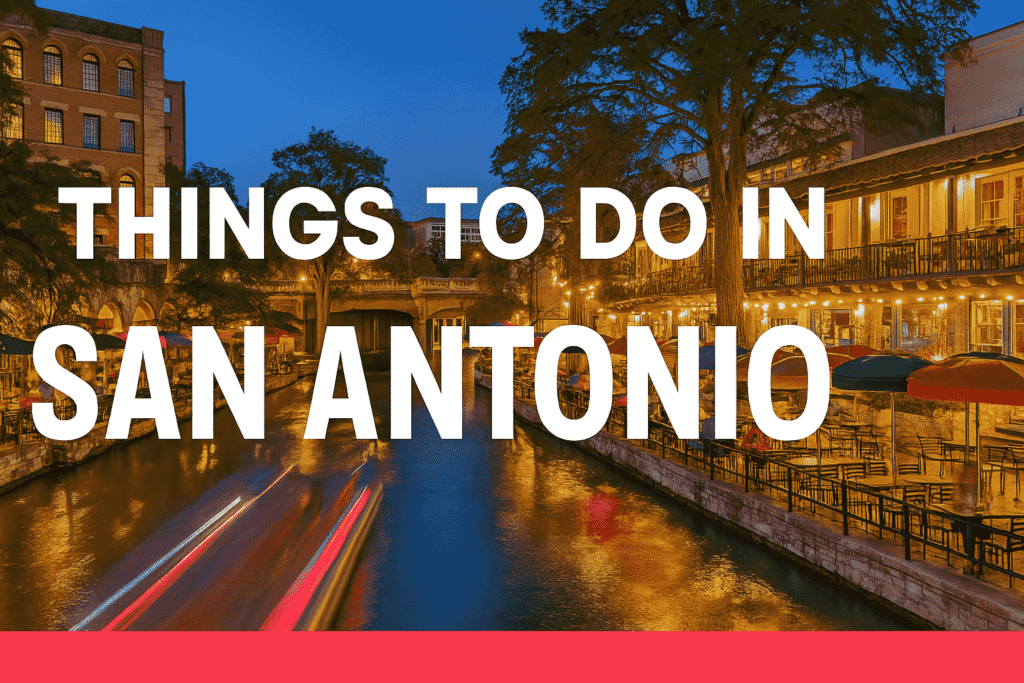
The “One Big Beautiful Bill Act” (OBBBA) is the talk of the town in 2025, a sprawling piece of legislation that’s as ambitious as its name suggests. Championed by President Donald Trump during his second term, this bill is a massive package of tax cuts, spending initiatives, border security measures, and policy reforms that aim to reshape the American economy and society. Clocking in at over 1,000 pages, it’s a legislative behemoth that’s sparked heated debates, a public feud between Trump and Elon Musk, and concerns about its long-term impact on the United States. In this SEO-friendly and user-friendly guide, we’ll break down every aspect of the OBBBA, explore its key provisions, dive into the Trump-Musk drama, and analyze how it could shape America’s future—both for better and for worse. Buckle up; this is going to be a wild ride.
Big Beautiful Bill 2025: Latest FAQs, Vote Results, Key Provisions & Real-Time Updates
1. When does the Big Beautiful Bill go into effect?
The Senate approved it on July 1, 2025, the House recertified it on July 3, and it’s expected to be signed into law by President Trump on July 4, 2025.
2. What’s in the Big Beautiful Bill?
It includes:
- Permanent extension of the 2017 Tax Cuts and Jobs Act,
- Termination of various Green New Deal/clean energy subsidies,
- New temporary deductions (tips/overtime/homegrown auto interest),
- Expanded military, border, and ICE funding,
- Work requirements and cuts to Medicaid and SNAP.
3. What does the Big Beautiful Bill do?
The law:
- Cuts taxes for individuals and corporations,
- Eliminates clean energy credits, repeals clean vehicle credits,
- Increases defense and border spending,
- Cuts social programs—notably Medicaid and SNAP—and attaches work requirements for recipients.
4. Did the Big Beautiful Bill pass?
Yes.
- House passed it 215–214 in May and 218–214 on July 3,
- Senate approved it 51–50, with Vice President JD Vance as the tiebreaker on July 1,
- It now awaits the President’s signature.
5. What is the Big Beautiful Bill summary?
A sweeping $3–$4 trillion budget reconciliation package that:
- Locks in 2017 tax cuts permanently,
- Repeals various green-energy incentives,
- Adds significant funding for defense and border security,
- Implements healthcare and welfare cuts,
- Introduces new tax breaks like deductions on tips and overtime income.
- In the House (final vote on July 3): Reps. Thomas Massie (KY) and Brian Fitzpatrick (PA) voted No.
- In the Senate (July 1): three Republicans voted No, including Rand Paul (KY) and Thom Tillis (NC).
7. Big Beautiful Bill tax brackets
It extends the 2017 tax brackets permanently, maintains lower rates, raises SALT cap to $40,000 for incomes under $500,000 (reverting after 5 years), and creates new deductions (tips/overtime/auto loan interest).
8. Who voted for the Big Beautiful Bill?
- House: Majority Republican support, 218–214 final vote.
- Senate: Republicans passed 51–50, with all Democrats unified against and no Republican defections except those three.
9. Big Beautiful Bill vote results
- House initial (May 22): 215–214–1; final (July 3): 218–214 in favor.
- Senate (July 1): 51–50, tiebreaker by VP Vance.
10. Does the Big Beautiful Bill cut Medicaid?
Yes. It imposes work requirements, limits state Medicaid funding, and eliminates coverage for illegal immigrants—projects indicate billions in cuts with millions losing coverage .
11. Big Beautiful Bill child tax credit
The Senate version increased the child tax credit to $2,200 permanently, while the House originally had it at $2,500 until 2028, then $2,000.
12. Highlights of Big Beautiful Bill
- Tax: Makes 2017 rates permanent, SALT cap up, new deductions,
- Energy: Ends GND credits, clean-car subsidies,
- Defense & Border: Billions in new funding,
- Health/Welfare: Medicaid/SNAP cuts, work mandates,
- Other: Funds National Garden of American Heroes, authorizes NASA shuttle relocation, etc..
13. How many votes does the House need to pass a bill?
A simple majority of 218 votes (of 435) is required if all members are present. This bill passed 218–214 in its final House vote
What is the One Big Beautiful Bill Act?
The Big Beautiful Bill Act OBBBA is a budget reconciliation bill passed by the House of Representatives on May 22, 2025, with a razor-thin 215-214 vote, and it’s currently under scrutiny in the Senate as of June 2025. Named with Trump’s characteristic flair, the bill is designed to cement his second-term agenda by extending his 2017 Tax Cuts and Jobs Act, boosting border security, increasing defense spending, and slashing funding for social programs like Medicaid and SNAP. It’s a one-stop shop for Republican priorities, using the reconciliation process to bypass the Senate’s 60-vote filibuster requirement, allowing passage with a simple majority (Republicans hold a 53-47 Senate edge).
“THE ONE, BIG, BEAUTIFUL BILL” has PASSED the House of Representatives! This is arguably the most significant piece of Legislation that will ever be signed in the History of our Country! The Bill includes MASSIVE Tax CUTS, No Tax on Tips, No Tax on Overtime, Tax Deductions when…
— Donald J. Trump (@realDonaldTrump) May 22, 2025
This bill isn’t just about taxes or borders—it’s a bold attempt to reshape federal policy across multiple fronts. It includes everything from tax breaks for the wealthy to new fees for asylum seekers, from funding for a border wall to cuts in green energy incentives. Its supporters call it a trans formative win for American families, while critics label it a regressive disaster that prioritizes the rich and burdens the poor. Let’s dive into the nitty-gritty of what’s inside this legislative leviathan.
Key Provisions of the One Big Beautiful Bill Act
The Big Beautiful Bill Act OBBBA is a smorgasbord of policies, blending tax cuts, spending hikes, and regulatory changes. Here’s a detailed breakdown of its major components:
1. Tax Cuts and Extensions
The cornerstone of the One Big Beautiful Bill Act OBBBA is its tax policy, which builds on Trump’s 2017 Tax Cuts and Jobs Act, set to expire in 2025. The bill makes these cuts permanent and introduces new ones, with the Congressional Budget Office (CBO) estimating a $3.7 trillion tax reduction over a decade. Here’s what’s included:
- Permanent 2017 Tax Cuts: Extends lower individual income tax rates, a doubled standard deduction, and an increased estate tax exemption, preventing a potential 22% tax hike for the average taxpayer. A family of four could save about $1,700 annually.
- New Temporary Tax Breaks (through 2028 or 2029):
- No Taxes on Tips: Service industry workers, like waiters and barbers, won’t pay taxes on tips, a campaign promise Trump heavily touted.
- No Taxes on Overtime Pay: A temporary exemption to boost take-home pay for workers, potentially saving them up to $1,750 annually.
- Car Loan Interest Deduction: Americans buying U.S.-made cars can deduct up to $10,000 in auto loan interest, expiring in 2029.
- Seniors’ Tax Relief: A $4,000 standard deduction increase for those 65 and older (Senate proposes $6,000), reducing taxes on Social Security benefits.
- Child Tax Credit Increase: Raises the credit from $2,000 to $2,500 per child (Senate draft suggests $2,200) through 2028, but limits eligibility to parents with Social Security numbers, excluding many non citizen parents of U.S. citizen children.
- State and Local Tax (SALT) Deduction: Increases the SALT deduction cap from $10,000 to $40,000 for households earning up to $500,000, a win for high-tax state residents but a point of contention among fiscal conservatives.
- Business and Farming Benefits: Expands the Section 199A deduction for pass-through businesses to 23% and doubles the estate tax exemption to protect family farms from the “death tax.”
These tax cuts are projected to deliver significant benefits, with estimates suggesting up to $13,300 more in take-home pay for a typical family and $11,600 in wage increases. However, the CBO notes that high earners (top 10%) will see a 2.3% income boost, while the poorest 10% may lose 3.9% due to reduced benefits.
2. Border Security and Immigration Enforcement
The Big Beautiful Bill Act OBBBA allocates a staggering $350 billion for border security and immigration enforcement, fulfilling Trump’s campaign promise of a robust crackdown. Key measures include:
- Border Wall Funding: $46.5 billion to complete 701 miles of primary wall, 900 miles of river barriers, and additional fortifications.
- Deportation Infrastructure: $45 billion for 100,000 detention beds, $14 billion for deportation operations, and funding to hire 10,000 ICE agents, 5,000 customs officers, and 3,000 Border Patrol agents, aiming to deport one million people annually.
- New Immigration Fees: Imposes fees like a $1,000 asylum application fee and a 3.5% tax on remittances sent abroad by noncitizens, expected to generate $77 billion.
- Restrictions on Benefits: Requires Social Security numbers for tax credits and bans undocumented immigrants from Medicaid and ACA premium tax credits.
These measures aim to curb illegal immigration but have drawn criticism for their cost and potential human rights implications, particularly the asylum fee, which critics argue could deter legitimate refugees.
3. Spending Cuts and Program Reforms
To offset the tax cuts, the Big Beautiful Bill Act OBBBA slashes federal spending by $1.3 trillion, targeting social safety nets and green energy. Key cuts include:
- Medicaid: Reduces funding by $625 billion and introduces work requirements for able-bodied adults (starting in 2026 in the House version, 2029 in the Senate). The CBO estimates 10.9 million people, including 1.4 million undocumented immigrants, could lose coverage.
- SNAP (Food Stamps): Cuts $267 billion and imposes work requirements, potentially affecting 11 million recipients. States must cover 25% of benefits costs in high-error states.
- Green Energy: Repeals or phases out tax credits from the 2022 Inflation Reduction Act for solar, wind, and electric vehicles, a move opposed by clean energy advocates.
- Student Loans: Replaces existing repayment plans with two less generous options, saving $330 billion.
- Provider Tax Cut: The Senate draft reduces state Medicaid provider taxes from 6% to 3.5% by 2031, impacting rural hospitals.
These cuts aim to reduce deficits but have sparked concerns about access to healthcare and food assistance, particularly for low-income Americans.
4. Defense and National Security
The bill boosts defense spending by $150 billion, including:
- $25 billion for the “Golden Dome” missile defense system.
- $34 billion for naval fleet expansion and $21 billion for ammunition restocking.
- $9 billion for service member housing and healthcare.
It also allocates $1 billion for border security within the Defense Department, blurring lines between military and immigration enforcement.
5. Other Notable Provisions
- Trump Savings Accounts: Creates $1,000 tax-advantaged accounts for newborns (2024-2028), allowing parents to contribute up to $5,000 annually for education, job training, or home purchases.
- AI Regulation Ban: Prohibits states from regulating AI for 10 years, a controversial provision that sparked backlash from Rep. Marjorie Taylor Greene.
- Firearm Silencers: Removes the $200 tax on silencers under the National Firearms Act.
- Public Land Leasing: Increases leasing for oil, gas, and timber, reversing Biden-era restrictions.
- Air Traffic Control Modernization: Funds upgrades to FAA systems, though Starlink integration was rejected.
- Rural Hospital Fund: The Senate adds $25 billion to protect rural hospitals from Medicaid cuts.
The Trump-Musk Feud: A Billionaire Bromance Gone Sour

Now, let’s get to the juicy part: the public spat between Donald Trump and Elon Musk over the One Big Beautiful Bill Act OBBBA. Picture this—two larger-than-life figures, once joined at the hip during the 2024 campaign, now trading barbs over a bill that’s supposed to be Trump’s crowning achievement. It’s like watching two reality TV stars fight over who gets the bigger trailer, except the stakes are a $2.4 trillion deficit and the future of the U.S. economy.
Musk, the former head of the Department of Government Efficiency (DOGE), didn’t mince words, calling the Big Beautiful Bill Act OBBBA a “disgusting abomination” and a “pork-filled” disaster that’ll balloon the deficit to $2.5 trillion. He’s particularly miffed about the bill’s $3.8 trillion cost (per CBO estimates) and its reversal of clean energy tax credits, which hit his Tesla Energy business hard. Musk, who spent months slashing federal spending with DOGE, sees the bill as a betrayal of his cost-cutting crusade, warning it’ll “burden Americans with crushingly unsustainable debt.”
Polls show that this bill is political suicide for the Republican Party pic.twitter.com/HJwKZ9g4tu
— Elon Musk (@elonmusk) June 28, 2025
Trump, never one to back down from a fight, brushed off Musk’s criticism with a classic “I’m the boss” attitude. White House Press Secretary Karoline Leavitt quipped, “The president already knows where Elon Musk stood on this bill. It doesn’t change his opinion. This is one big, beautiful bill, and he’s sticking to it.” Trump’s doubling down, touting the bill as “the most significant piece of legislation in the history of our country” on Truth Social, while House Speaker Mike Johnson tried to smooth things over by calling Musk, who apparently ghosted him.
The feud’s got everyone talking, with Democrats like Chuck Schumer gleefully agreeing with Musk (who saw that coming?) and fiscal hawks like Senators Rick Scott and Ron Johnson echoing his deficit concerns. Meanwhile, Trump’s MAGA base is torn—some side with their leader, while others vibe with Musk’s call for fiscal restraint. It’s a clash of egos and ideologies, with Musk playing the deficit hawk and Trump waving the flag of tax cuts and border walls. Who knew a “beautiful” bill could get so ugly?
Positive Impacts on the USA’s Future
The One Big Beautiful Bill Act OBBBA has its cheerleaders, and they’re not shy about singing its praises. Here’s how supporters argue it’ll benefit America:
- Economic Growth: The Council of Economic Advisers projects a 5.2% GDP increase over four years due to tax cuts and pro-business policies. Families could see up to $13,300 more in take-home pay, and workers might gain $11,600 in wages.
- Tax Relief for Families: The average family saves $1,300-$1,700 annually, with no taxes on tips or overtime boosting service and blue-collar workers. The child tax credit increase helps 40 million families, and seniors get relief on Social Security taxes.
- Border Security: Supporters argue the $350 billion investment will deter illegal immigration, reduce drug trafficking, and strengthen national security with a completed border wall and increased deportations.
- Deficit Reduction: The $1.6 trillion in spending cuts, including Medicaid and SNAP reforms, is touted as the largest mandatory spending reduction in history, potentially easing fiscal pressures.
- American-Made Incentives: Deductions for U.S.-made car loans and business tax breaks encourage domestic manufacturing and job creation.
- Trump Savings Accounts: The $1,000 accounts for newborns could foster long-term financial security, with tax-advantaged growth for education or homeownership.
Republicans like Rep. Jason Smith argue the bill delivers “economic freedom” and fulfills voter demands for lower taxes and secure borders, setting the stage for a “national Golden Age.”
Negative Impacts on the USA’s Future
Critics, however, see the One Big Beautiful Bill Act OBBBA as a fiscal and social trainwreck. Here’s why they’re sounding the alarm:
- Massive Deficit Increase: The CBO estimates the bill will add $2.4-$3.8 trillion to the national debt by 2034, with some analysts warning of $5 trillion if temporary tax cuts become permanent. This could spike interest rates, fuel inflation, and burden future generations.
- Healthcare Crisis: Medicaid cuts could strip coverage from 10.9-16 million people, including 7.6 million from work requirements alone. A Yale/Penn study suggests 51,000 preventable deaths could result.
- SNAP Reductions: Cutting $267 billion and imposing work requirements may push 11 million people off food assistance, exacerbating hunger and poverty.
- Regressive Tax Structure: The CBO notes that high earners gain 2.3% in after-tax income, while the poorest lose 3.9% due to benefit cuts. This makes the OBBBA more regressive than any major law in decades.
- Immigration Harshness: The $1,000 asylum fee and remittance tax could deter refugees and hurt families reliant on overseas support, potentially violating international humanitarian norms.
- Environmental Setbacks: Repealing green energy credits undermines climate goals, threatening energy independence and grid reliability, as Musk’s Tesla Energy has warned.
- AI Regulation Ban: The 10-year state AI regulation ban could stifle innovation and consumer protections, as Rep. Greene highlighted.
Democrats like Sen. Elizabeth Warren call it a “tax scam” that prioritizes billionaires over the poor, while fiscal conservatives worry it betrays Republican principles of limited government.
Critical Analysis: A Mixed Bag with High Stakes
The One Big Beautiful Bill Act OBBBA is a high-stakes gamble. On one hand, its tax cuts and border security measures could stimulate growth and fulfill campaign promises, appealing to Trump’s base. The economic projections—5.2% GDP growth, $13,300 in take-home pay—sound enticing, but they rely on optimistic assumptions about revenue generation that didn’t fully materialize after the 2017 tax cuts. On the other hand, the $2.4-$5 trillion debt increase is a red flag, especially with the U.S. debt-to-GDP ratio already at 100% and projected to hit 156% by mid-century.
The bill’s regressive nature is particularly troubling. While middle-class families may see modest tax savings, the poorest Americans face benefit cuts that could deepen inequality. The healthcare and SNAP reductions risk creating a public health and hunger crisis, with 10.9-16 million losing insurance and millions more losing food aid. The immigration provisions, while popular with some, may face legal challenges and international backlash, especially the asylum fee.
The environmental rollback is another sticking point. Repealing green energy credits could cede U.S. leadership in clean energy to competitors like China, contradicting claims of “technological dominance.” And the AI regulation ban, while pro-business, could lead to unchecked corporate overreach, as even MAGA loyalists like Greene have noted.
Conclusion: A Bill as Big as Its Risks
The One Big Beautiful Bill Act is a bold, divisive, and complex piece of legislation that embodies Trump’s vision for America—lower taxes, fortified borders, and a leaner government. Its supporters see it as a path to economic prosperity and national security, while critics warn of fiscal recklessness, social harm, and environmental regression. The Trump-Musk feud only adds to the drama, highlighting tensions between populist ambition and fiscal restraint.
As the Senate debates the bill with a July 4, 2025, deadline looming, its fate hangs in the balance. Will it usher in a “Golden Age” or a debt-fueled disaster? Only time will tell, but one thing’s certain: this “One Big Beautiful Bill Act” bill is anything but simple. For more details on its progress, check trusted sources like the Congressional Budget Office or major news outlets like PBS and Reuters.
For more such news and update stay tuned with Usamainland.com



